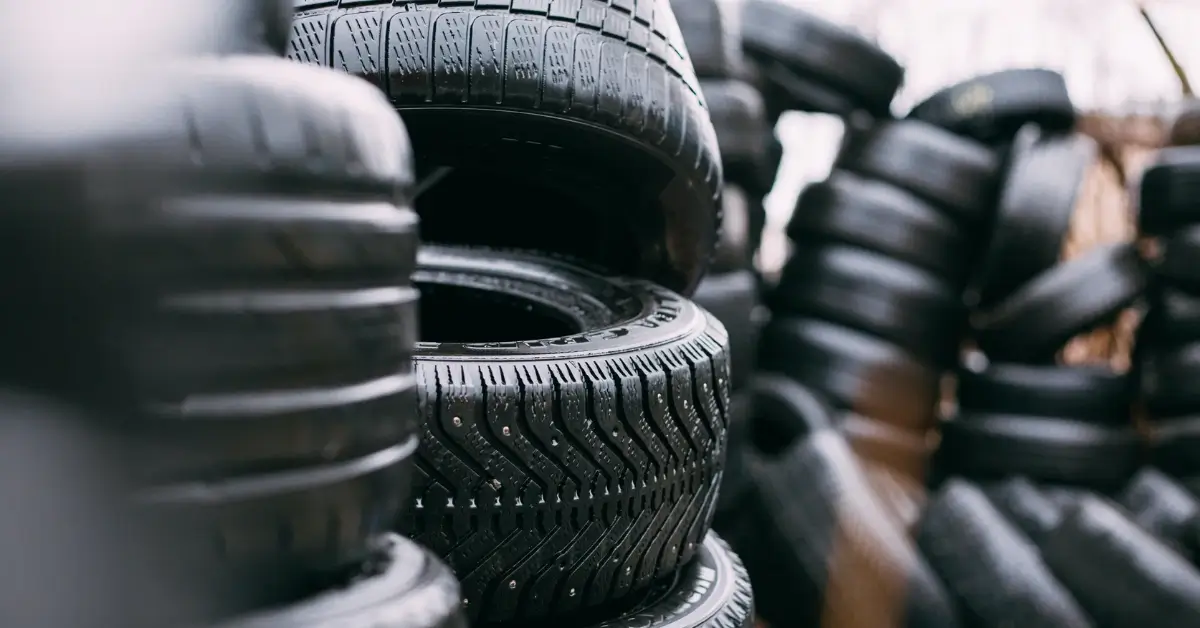When we think about car maintenance and performance, we often don´t think of car tire parts, but they play a crucial role that often goes overlooked. Just like the right pair of shoes can make a day on your feet a lot more comfortable, the right tires can completely change your driving experience
“The best tires are the ones that give you peace of mind.”
Continental
Understanding the different car tire parts can help us make informed decisions when it is time for replacements or upgrades. Car tire parts – from the inner lining to the tread – work together to provide stability, traction, and – buffer from the road. Whether we’re faced with rain, snow, or a sunny day drive, the quality of our car tire parts is crucial for safety and performance.
It’s not just about getting from A to point B; it’s about how we get there. Good tires with solid car tire parts can save our lives and ensure a smoother ride. So it’s worth taking a moment to familiarize ourselves with the essentials of tire anatomy.

Tire Construction
When we look at car tire parts, it’s essential to understand the tire’s construction, as it’s critical to your vehicle’s performance on the road. From the rubber that meets the road to the inner layers that hold it all together, each part plays a significant role.
Beads
The beads are what keep your tire securely fitted to the rim of the wheel. They are made of high-strength steel coated in rubber, which gives them the ability to grip the wheel tightly and ensure the tire does not slip off during use.
Sidewall
The sidewall protects the side of your tire from impacts and accidents. If you look at the sidewall, you’ll find important information such as the tire size, type, and performance ratings. It contributes significantly to the tire’s ride quality and durability.
Tread
The tread is one of the car tire parts that we’re most familiar with because it makes direct contact with the road surface. The tread design affects the tire’s grip, and handling in various weather conditions, and can even influence fuel efficiency.
Ply Layers
Finally, the ply layers form the tire’s structure and can be composed of materials like synthetic rubber, fabric, and wire. These layers are stacked and bonded together to provide the necessary stiffness and flexibility for your tire to perform as designed.
Tire Types
When we talk about car tire parts, the type of tire is a key factor that can drastically affect your vehicle’s performance. Each tire type is designed with specific conditions in mind, from weather patterns to the driving environment.
All-Season Tires
All-season tires are the multipurpose workhorses of car tires. They offer a balanced performance in wet and dry conditions, moderate snow traction, and generally provide a comfortable ride and long tread life. Their tread pattern is designed to handle a variety of driving conditions, making them a convenient choice for year-round usage (But keep in mind, that All season is a Tire for all conditions, if you often have harsh conditions like extreme Winter, winter tires should be your choice).
Performance Tires
Performance tires, as the name suggests, optimize handling and grip on both dry and wet roads. These tires often feature a softer rubber compound for better traction and may have a lower profile for improved stability and response. However, they may wear out faster than all-season tires and might not perform as well in colder climates.
Winter Tires
Winter tires are built specifically for cold weather and snowy or icy conditions. They boast a special tread compound that remains flexible in low temperatures for better vehicle control. Additionally, their deep treads and biting edges ensure superior grip on snow and ice but have a shorter lifespan if used year-round.
Off-Road Tires
Off-road tires are all about durability and traction on rough terrains. With reinforced sidewalls and aggressive tread patterns, they are designed to withstand the challenges of gravel, rock, mud, and sand. Keep in mind that while they excel off the beaten path, off-road tires might produce more noise and offer less comfort on conventional roads.

Tire Maintenance
When it comes to car tire parts, knowing how to maintain them can extend their life and improve your vehicle’s performance. We’ll focus on air pressure checks, tread wear inspection, and the importance of rotation and balancing to keep your tires in top-notch condition.
Air Pressure Checks
We must check our tire pressure monthly to ensure optimal performance and safety. Incorrect pressure can lead to increased wear and tear, reduced fuel efficiency, and even tire failure. Use a reliable tire gauge and consult your vehicle’s manual for the correct pressure. Don’t forget to check the spare tire as well!
Steps for checking
- Remove the cap from the valve stem.
- Press the tire gauge onto the valve stem.
- Read the pressure level and compare it with the recommended level.
- Inflate or deflate to reach the recommended air pressure.
Tread Wear Inspection
Regular inspection of our tire’s treads helps us identify wear patterns that can indicate other issues with other car tire parts, like misalignment or suspension problems. A simple way to check tread depth is the penny test. If we see the top of Abraham Lincoln’s head, it’s time to replace the tire.
Treadwear signs
- Shallow Treads: Less than 2/32 of an inch tread depth.
- Uneven Wear Patterns: This could signify alignment issues.
- Cuts or Cracks: Possible damage that could lead to tire failure.
Rotation and Balancing
Tire rotation should occur every 5,000 to 8,000 miles to help even out the wear. Balancing our tires ensures a smoother ride, reduced tire wear, and improved vehicle handling. This is usually done when we get new tires fitted but should also be a part of regular tire maintenance.
Rotation Patterns
- Front to Rear: For vehicles with the same size tires on all wheels.
- X-pattern: Suitable for cars with the same size tires on all wheels.
- Side to Side: For different sized tires on the front and rear.

Tire Materials
When we talk about car tire parts, materials are at the core of their durability and performance. Each component plays a distinct role in providing stability, strength, and efficiency to the tire as a whole.
Natural Rubber
Natural rubber is the foundation for many tire constructions, giving tires their necessary elasticity and resilience. It’s derived from the sap of rubber trees and is particularly valued for its ability to withstand high stresses and return to its original shape.
Synthetic Rubber
In contrast, synthetic rubber is a man-made material typically produced from petroleum byproducts. This type of rubber in car tire parts offers enhanced abrasion resistance and aging stability, which makes tires last longer and perform better in a variety of weather conditions.
Fabric and Wire
The fabric and wire found within tires reinforce their structure. Fabrics such as polyester, rayon, or nylon provide tensile strength to the tires’ body plies. Meanwhile, wires made of steel and often coated with copper, brass, or bronze, add rigidity to the tire beads, ensuring a secure fit to the wheel rim.
Additional Car Tire Parts
When we look beyond the basics of car tire parts, some elements significantly impact performance and safety. Let’s explore a few of these additional components.

Sipes
Sipes are small slits cut across a tire’s tread. We often overlook these tiny cuts of these car tire parts, but they play a crucial role in improving traction. When we drive on wet or icy roads, sipes work by allowing the tire to flex, which helps to displace water and reduce the risk of hydroplaning.
Grooves
The grooves in our tires are the channels that run around the circumference of the tire or laterally across the tread. These grooves are designed to channel water away from the tire’s contact patch to help prevent hydroplaning. The deeper these grooves, the more water they can displace, and the better our tires can grip the road in wet conditions.
Shoulder Blocks
Shoulder blocks refer to the thicker, often larger tread elements located on the outer edges of the tire tread. We find shoulder blocks critical for providing increased cornering stability and traction. When we take a turn, these blocks offer the additional grip needed for our car to maintain stability and control.
FAQ
What are the parts of a tire?
– Tread. …
– Jointless cap plies. …
– Steel-cord for belt plies. …
– Textile cord ply. …
– The inner liner, made from butyl rubber, seals the air-filled inner chamber and acts as a tube in tubeless tires.
– The side wall protects the casing from external damage and atmospheric conditions.
What is the car tire area called?
Ribs: A pattern of tread features aligned around the circumference of the tire. Usually, there are multiple ribs across the tread area of a tire. Shoulder: The area of the tire where the tread and sidewall meet. Sidewall: The Sidewall protects the side of the tire from impact with curbs and the road.
What fills a tire?
Air, the standard gas used to fill car tires, is comprised of 78 percent nitrogen. The rest of the gas is made of approximately 21 percent oxygen, water vapor, carbon dioxide, and smaller concentrations of miscellaneous noble gases such as neon and argon.
Hey mate, good to see you again!
Did you know everything about the car tire parts? Or did you even know more?
Tell me more in the comments or write me a Mail, I would love to get your Feedback.
See you next time when it says again…
…”Let´s Ride!”





